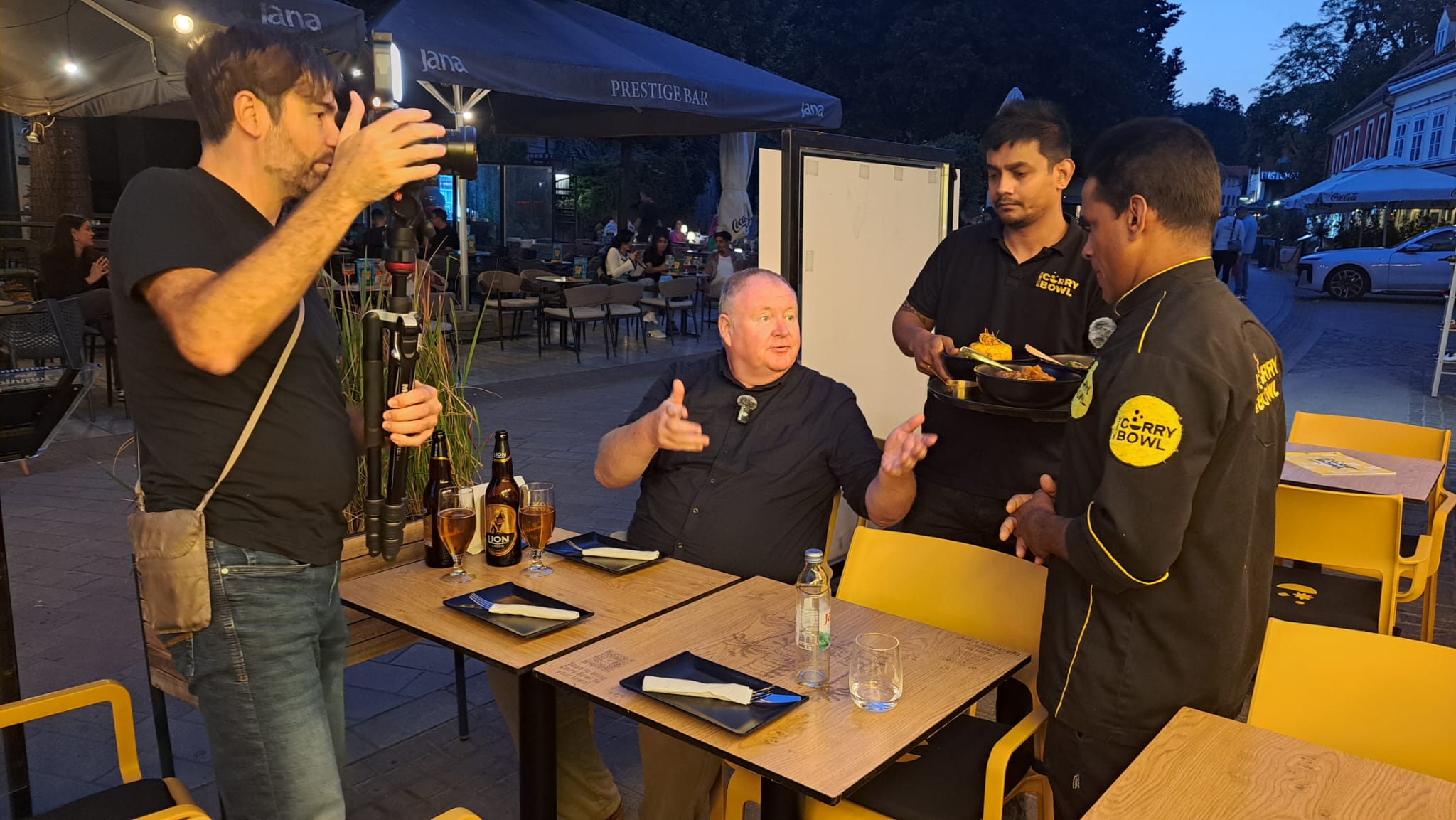In the Kitchen of Time: Zlatko Puntijar and the Museum of Hospitality
In an old Zagreb house in Gračani, where the aromas of game stews and poppy seed rolls from Stari Puntijar’s kitchen once lingered, new scents now drift through the air, the scent of old books, the scent of history. On carefully arranged shelves in antique cabinets from the family’s heritage, in a space that feels like an old library lost in time, Zlatko Puntijar preserves nearly three thousand cookbooks, two thousand menus, and a thousand travel guides from all around the world, along with countless other items connected to hospitality and tourism. This is not merely a collection in the conventional sense, but rather an archive of love for the profession, a testament to how the table has, through centuries, been a place of encounter, culture and identity.
The Puntijar family has been in the hospitality business since the 19th century, when Zagreb was just beginning to take shape. The restaurant Stari Puntijar in Gračani is one of the few remaining witnesses of that time – a living monument to hospitality and family tradition. Zlatko Puntijar has merged his family heritage with personal curiosity and passion into a remarkable venture: creating his own museum of gastronomic and table culture history.
.jpg)
“I wouldn’t even know where to begin, there’s just so much,” he says, turning the yellowed pages of editions with titles written in German, Hungarian, Czech, Italian, Croatian, Chinese and Egyptian. As time passed and Zlatko spoke, while we listened with eyes wide open, we began to understand what he meant. Wherever the conversation turned, new facts, dates, curiosities and stories surfaced. So much knowledge gathered over the years, so many preserved moments that might otherwise have been lost. It’s as if every book has a soul, every stain on fragile paper tells of a time when cooking was done with handwriting and heart, when the profession was a temple, sacred, steadfast, an unshakable value.
A special place in this priceless collection belongs to a 1581 edition, a copy of the famous cookbook by Marx Rumpolt, the head chef to the Prince of Mainz, a work considered one of the cornerstones of European culinary literature.
Among the rarities are a vegetarian cookbook from Leipzig (1898), a Prague edition from 1897, a Zagreb cookbook from 1936, and the first cookbook printed in Croatian, written by Ivan Birling in 1813. In that last one, the author mentions that some recipes come from the historic Viennese cookbook by Maria Eleonora Rosalia from 1695, divided into sections on medicine and cooking – a 1709 edition of which also exists in this very collection! Another important piece is “The Science of Serving” by Adolf Hess from 1912, translated into Croatian by Fran Horvat, then president of the waiters’ association. That title reminds us that hospitality, in its serious form, is much more than a trade: it is both science and art, a craft of conduct and psychology, and a kind of philosophy of everyday life. One must also mention Maria Kumičić’s “New Zagreb Cookbook” (1888), as well as the series of books by Katharina Prato, whose editions from the mid-19th to early 20th century reached nearly half a million copies in 16 languages.
.jpg)
.jpg)
In one Croatian cookbook, we even get to peek into a nobleman’s pantry from the year 1600, with an order list for the Čakovec manor featuring delicacies like oysters, octopus, fresh sea fish and Malvasia wine. Some books are specialized to the point of eccentricity – entirely devoted to eggs, the meats of unusual animals or the art of plating. One of the most charming pieces is certainly the smallest cookbook in the world, the size of a matchbox, with elegant metal covers and printed on Bible paper, filled with an incredible one hundred recipes.
But cookbooks are not the only ones telling stories here. The walls and tables are covered with old menus from Zagreb hotels and restaurants from the turn of the 19th to the 20th century, from Hotel Palace and Lovački rog, to the Main Train Station Restaurant and Hotel “To the Austrian Emperor”, which once stood where Nama in Ilica stands today. On those yellowed sheets, you can see how tastes changed, and how Zagreb itself transformed: from a modest bourgeois town into a European capital. In dishes that are now rarely prepared, game birds, organ meats or lavish desserts that never spared sugar, one can sense the confidence of an age that lived by an “all-in” attitude. :)
.jpg)
Finally, among the book-lined shelves and antique furniture lie centuries-old artifacts that could easily belong in an ethnographic museum: corkscrews from various eras, an antique wooden ice-cream maker and an old-fashioned “refrigerator” – a wooden cart where drinks were cooled with a block of ice. On the wall, the most delightful detail for us wine lovers was a poster for Zagreb’s first wine fair from the early 19th century, where, Zlatko says, his ancestor Adam Puntijar was among the exhibitors.
If Zagreb were to tell its story through a single object, perhaps it wouldn’t be a monument or a chronicle, but a cookbook, for within it are recorded our habits, our language and the spirit of the times.
In Zlatko Puntijar’s collection, which everyone should see and experience, time isn’t measured in hours or days, but in dishes, and in the words of those who wrote about them before us.
And if Zagreb had to be described through a single book, perhaps you should begin leafing right here, among the bindings of leather and fabric – because between these pages, what’s preserved is not only the history of cooking, but the history of living itself.






.webp)




